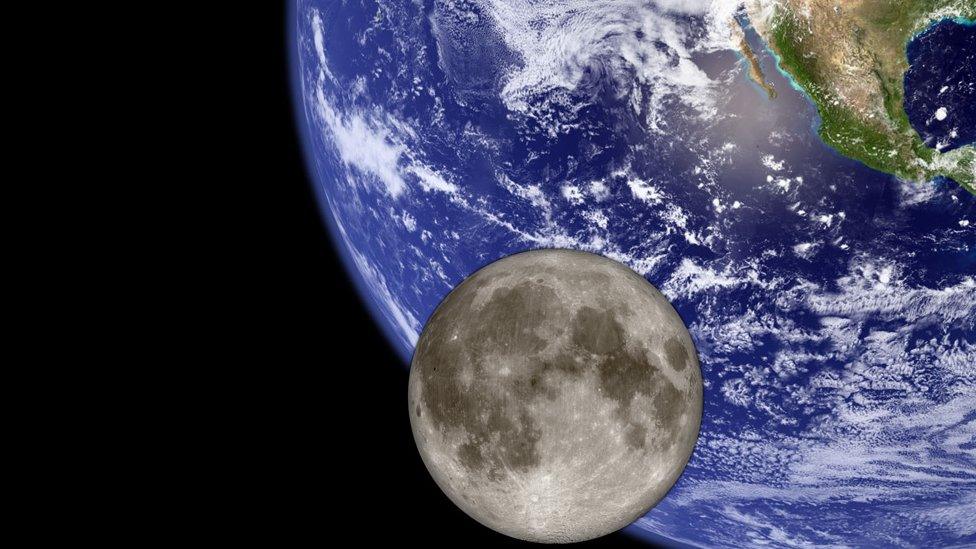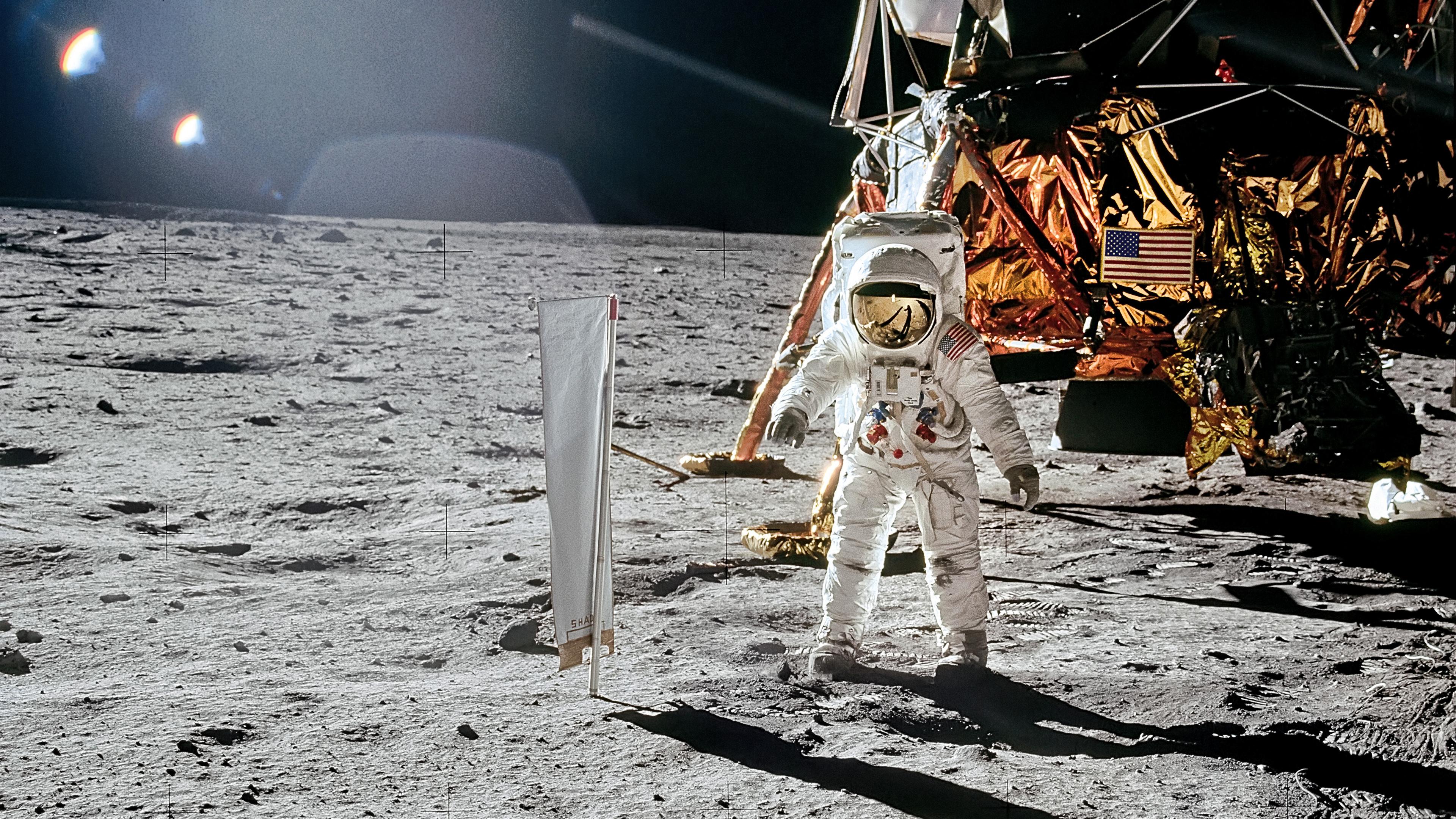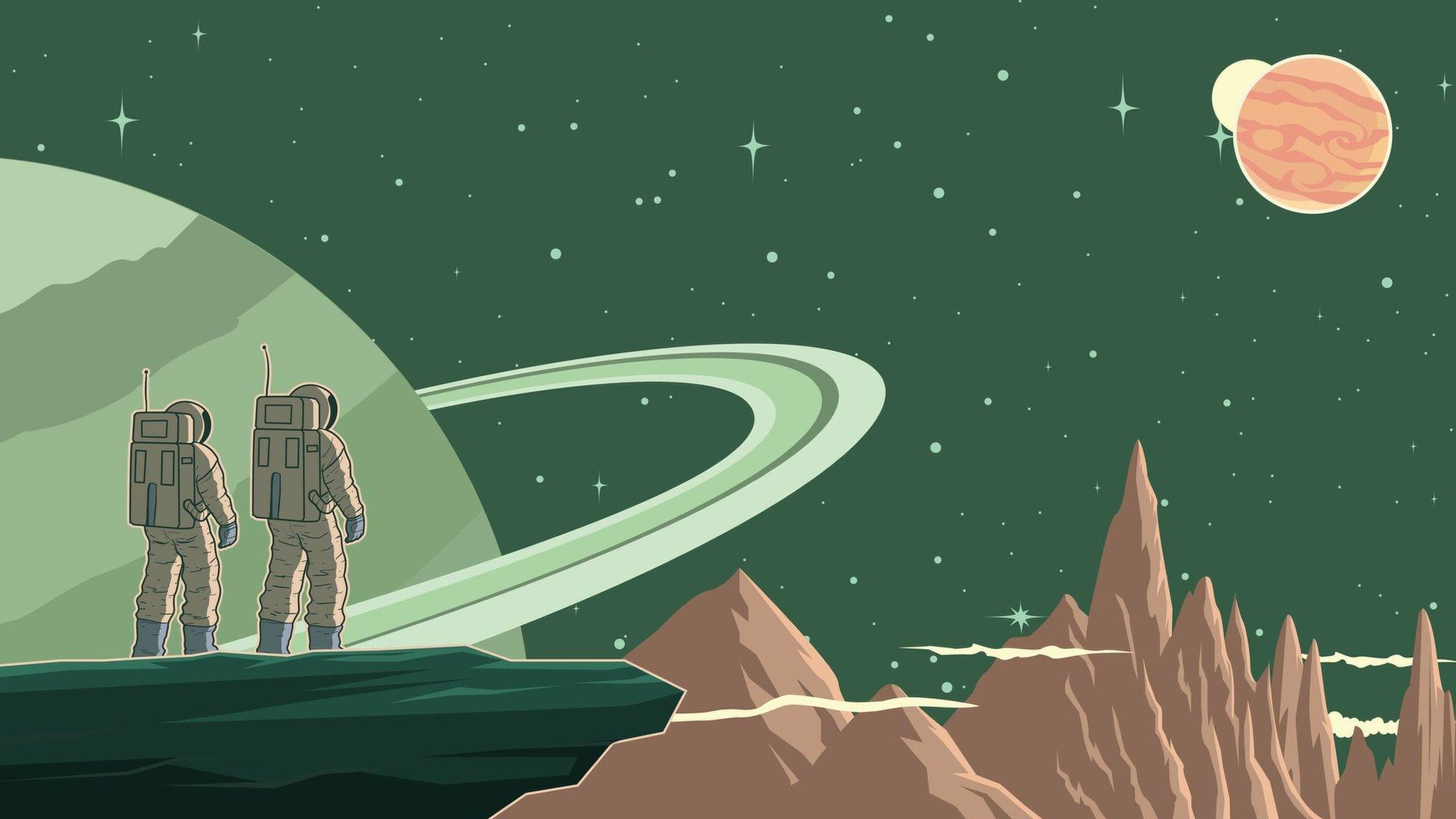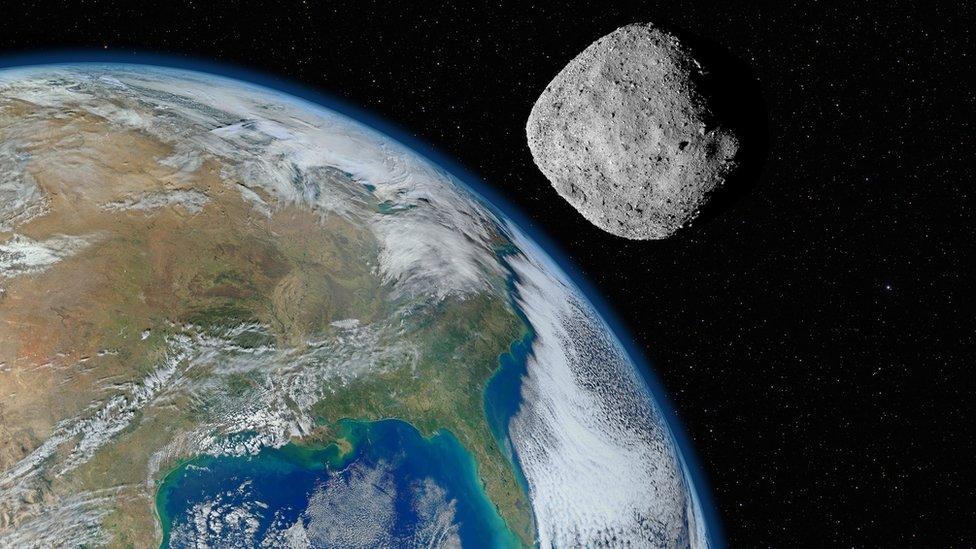Surface of the Moon once an ocean of magma
- Published
- comments

The Moon's surface was once an ocean of hot, slushy magma.
That's according to some new research by the University of Cambridge which says that the Moon's bumpy surface could be the way it is because of a process called crystallisation.
According to the theory, crystals remained suspended in liquid magma over hundreds of millions of years as the lunar 'slush' froze and solidified.
'Giant impact' theory

The most widely accepted theory of how the Moon formed is the 'giant-impact' theory.
It states that the Moon was formed during a collision between the Earth and another small planet, about the size of Mars. The waste from this impact collected in an orbit around Earth to form the Moon.
As a result of the crash, the Moon was very hot and formed of slushy liquid magma which then solidified over hundreds of millions of years.
What are anorthosites?

In 1969, Neil Armstrong and Buzz Aldrin from the Apollo 11 mission became the first men to stand on the Moon
In 1969, the Apollo 11 mission saw humans land on the moon for the first time.
During this mission, the astronauts collected rock samples from the Moon in an area called the lunar highlands.
The lunar highlands are the heavily cratered regions of the Moon and they are made up of rocks called anorthosites.
Molten, or hot liquid, rock located deep below the Earth's surface is called magma. Magma is formed when temperatures within Earth's crust are very hot and when pressure in places within those layers decreases. When a volcano erupts or a deep crack occurs in the Earth, the magma rises and overflows.
Anorthosite rocks formed early in the history of the Moon, between 4.3 and 4.5 billion years ago.
Similar anorthosite rocks, formed through the magma becoming solid, can be found in ancient magma chambers on Earth.
So as there is loads of anorthosite on the Moon, experts say it's most likely that there was once a huge global magma ocean there.
- Published14 September 2021

- Published15 October 2021

- Published18 January 2022

